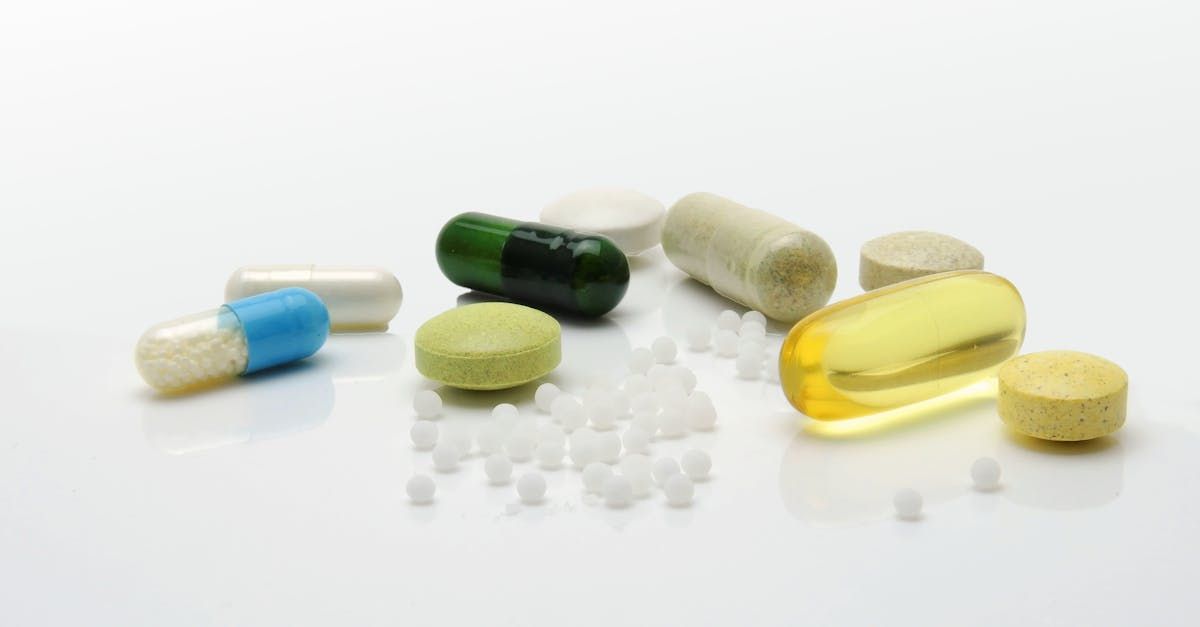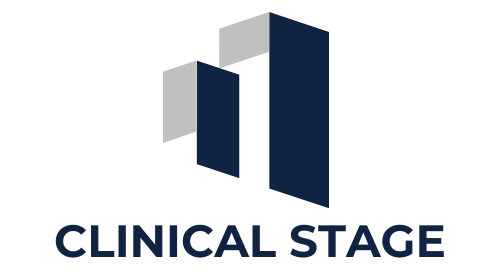Navigating Regulatory Approval Process for New Drugs
The journey from a laboratory discovery to a market-ready pharmaceutical product is a complex and meticulously regulated process. Regulatory approval is a crucial milestone in drug development, ensuring that new medications are both safe and effective for public use. This process involves rigorous evaluation and oversight by key regulatory agencies, such as the U.S. Food and Drug Administration (FDA) and the European Medicines Agency (EMA). These agencies set the standards and guidelines that pharmaceutical companies must follow to bring their products to market.
The FDA and EMA play pivotal roles in protecting public health by scrutinizing every aspect of a new drug, from preclinical research through to post-marketing surveillance. Their stringent requirements are designed to safeguard patients and ensure that any new therapeutic benefits outweigh potential risks.
This blog aims to provide an overview of the regulatory approval process for new drugs, detailing the steps involved and highlighting the roles of the FDA and EMA. By understanding this process, stakeholders in the pharmaceutical industry can better navigate the complexities of drug development and bring innovative treatments to those who need them most.
The Importance of Regulatory Approval
Ensuring Safety and Efficacy of New Drugs
The primary goal of regulatory approval is to ensure that new drugs are both safe and effective for their intended use. Before a drug can reach the market, it must undergo a series of rigorous tests and evaluations. This process begins with preclinical studies, which assess the drug's biological activity and potential toxicity in the laboratory and animal models. If these studies show promising results, the drug can then proceed to clinical trials involving human subjects.
Throughout the clinical trial phases, the drug's safety, efficacy, and optimal dosing are meticulously examined. Regulatory agencies like the FDA and EMA review the data from these trials to determine whether the drug provides a therapeutic benefit that outweighs any risks. This thorough evaluation helps prevent harmful or ineffective drugs from reaching patients, thereby maintaining high standards of healthcare.
Protecting Public Health
Regulatory approval processes are designed to protect public health by ensuring that only drugs that meet stringent safety and efficacy criteria are available on the market. This involves not only initial approval but also continuous monitoring of the drug's performance once it is available to the public. Post-marketing surveillance programs track adverse events and other issues that may arise, allowing regulatory agencies to take swift action if necessary. This ongoing vigilance helps maintain trust in the healthcare system and ensures that patients receive treatments that are both safe and effective.
Encouraging Innovation in the Pharmaceutical Industry
While the regulatory approval process is rigorous, it also encourages innovation within the pharmaceutical industry. By setting high standards for safety and efficacy, regulatory agencies drive pharmaceutical companies to invest in high-quality research and development. This leads to the creation of innovative treatments that can address unmet medical needs and improve patient outcomes.
Moreover, regulatory agencies offer various incentives to encourage the development of novel therapies, especially for conditions that currently lack effective treatments. Programs like Fast Track, Breakthrough Therapy Designation, and Orphan Drug Designation provide benefits such as expedited review processes and market exclusivity, which can significantly reduce the time and cost associated with bringing new drugs to market. These incentives help foster a dynamic and competitive pharmaceutical industry that continuously strives to advance medical science and enhance patient care.
Regulatory approval is not merely a bureaucratic hurdle; it is a fundamental process that ensures the delivery of safe, effective, and innovative therapies to patients. By understanding and navigating this process, pharmaceutical companies can successfully bring new drugs to market, benefiting both public health and the industry as a whole.
Key Regulatory Agencies
Overview of the FDA
Role and Responsibilities:
The U.S. Food and Drug Administration (FDA) is a federal agency under the Department of Health and Human Services (HHS). The FDA is responsible for protecting public health by ensuring the safety, efficacy, and security of human and veterinary drugs, biological products, and medical devices. The agency also oversees the safety of the nation’s food supply, cosmetics, and products that emit radiation.
In the context of drug development, the FDA's primary responsibilities include reviewing new drug applications, monitoring clinical trials, and conducting post-marketing surveillance to ensure that drugs remain safe and effective once they are on the market. The FDA works closely with pharmaceutical companies to guide them through the regulatory approval process, providing feedback and support to help them meet regulatory requirements.
Regulatory Framework and Guidelines:
The FDA operates under a comprehensive regulatory framework designed to ensure the safety and efficacy of new drugs. This framework includes:
- Investigational New Drug (IND) Application: Before a new drug can be tested in humans, the sponsor must submit an IND application, which includes preclinical data, proposed clinical trial protocols, and information about the drug's composition and manufacturing. The FDA reviews the IND to ensure that the proposed studies do not pose an unreasonable risk to participants.
- New Drug Application (NDA): After clinical trials are completed, the sponsor submits an NDA, which includes all data from preclinical and clinical studies, as well as information about the drug's manufacturing, labeling, and proposed use. The FDA reviews the NDA to determine whether the drug is safe and effective for its intended use.
- Post-Marketing Surveillance: Once a drug is approved, the FDA continues to monitor its safety and efficacy through adverse event reporting systems and post-marketing studies. The FDA can take regulatory actions, such as updating labeling, restricting use, or withdrawing approval, if new safety concerns arise.
Overview of the EMA
Role and Responsibilities:
The European Medicines Agency (EMA) is a decentralized agency of the European Union (EU) responsible for the scientific evaluation, supervision, and safety monitoring of medicines within the EU. The EMA's primary goal is to ensure that all medicines available in the EU are safe, effective, and of high quality.
The EMA works with national regulatory authorities in EU member states to assess and monitor medicines throughout their lifecycle, from initial development to post-marketing surveillance. The agency provides scientific advice to pharmaceutical companies, supports the development of new medicines, and coordinates the EU’s response to emerging health threats.
Regulatory Framework and Guidelines:
The EMA operates under a regulatory framework that includes:
- Marketing Authorization Application (MAA): Pharmaceutical companies seeking to market a new drug in the EU must submit an MAA to the EMA. The MAA includes comprehensive data from preclinical and clinical studies, as well as information about the drug's manufacturing, labeling, and proposed use. The EMA's Committee for Medicinal Products for Human Use (CHMP) conducts a scientific assessment of the MAA and makes a recommendation on whether the drug should be approved.
- Centralized Procedure: For certain types of medicines, such as those for rare diseases or advanced therapies, the EMA conducts a single scientific assessment that is valid in all EU member states. This centralized procedure streamlines the approval process and ensures that innovative therapies are quickly available to patients across the EU.
- Pharmacovigilance: The EMA has a robust pharmacovigilance system in place to monitor the safety of medicines once they are on the market. This includes collecting and analyzing adverse event reports, conducting safety studies, and implementing risk management plans.
Comparison Between FDA and EMA
While both the FDA and EMA share the common goal of ensuring the safety and efficacy of new drugs, there are some differences in their regulatory approaches:
- Regulatory Scope: The FDA is responsible for regulating a wide range of products, including drugs, medical devices, food, and cosmetics, within the United States. The EMA, on the other hand, focuses exclusively on medicines for human and veterinary use within the EU.
- Approval Processes: The FDA's approval process involves the submission of an IND application followed by an NDA. The EMA's process involves the submission of an MAA and may include the centralized procedure for certain types of medicines. While both agencies require comprehensive data from preclinical and clinical studies, their specific requirements and review timelines may differ.
- Post-Marketing Surveillance: Both agencies have robust post-marketing surveillance systems to monitor the safety of approved drugs. However, their approaches to pharmacovigilance and risk management may vary based on regional regulations and healthcare systems.
Stages of Drug Development and Approval
Preclinical Research
Before a new drug can be tested in humans, it must undergo extensive preclinical research. This stage is critical for understanding the basic properties of the drug and evaluating its potential safety and efficacy. Preclinical research includes both laboratory (in vitro) and animal (in vivo) studies.
Laboratory and Animal Studies
In the laboratory, researchers conduct in vitro experiments to investigate the drug's chemical properties, mechanisms of action, and effects on various biological targets. These studies help to identify potential therapeutic benefits and predict how the drug might behave in the human body.
Animal studies, conducted in vivo, are essential for assessing the drug's pharmacokinetics (how the drug is absorbed, distributed, metabolized, and excreted) and pharmacodynamics (the drug's effects on the body). These studies provide valuable data on the drug's safety profile, including potential side effects and toxicities. Commonly used animal models include rodents (such as mice and rats) and non-rodent species (such as dogs or primates), chosen based on their relevance to human physiology and the disease being studied.
Safety and Biological Activity Evaluation
During preclinical research, scientists evaluate the drug's biological activity and safety through a series of tests designed to identify any potential risks. Key aspects of this evaluation include:
- Toxicity Testing: Researchers assess the drug's potential toxicity by administering it at various doses and monitoring for adverse effects. Acute toxicity tests determine the immediate harmful effects of a single dose, while chronic toxicity tests evaluate the long-term effects of repeated dosing. Special toxicity studies, such as genotoxicity (potential to cause genetic damage) and carcinogenicity (potential to cause cancer), are also conducted if needed.
- Pharmacokinetics and Pharmacodynamics (PK/PD) Studies: These studies help to understand how the drug behaves in the body and its biological effects. Pharmacokinetic studies investigate the drug's absorption, distribution, metabolism, and excretion, providing insights into the appropriate dosing regimen. Pharmacodynamic studies assess the drug's effects on biological systems and its mechanism of action.
- Efficacy Testing: Preclinical efficacy studies evaluate the drug's ability to produce the desired therapeutic effect. These studies often use animal models of the disease to simulate human conditions and measure the drug's impact on relevant biomarkers or clinical endpoints.
The data generated from preclinical research form the foundation for the next stages of drug development. If the results are promising and demonstrate a favorable balance between safety and efficacy, the sponsor can proceed to the clinical trial phase, starting with the submission of an Investigational New Drug (IND) application to regulatory agencies such as the FDA or EMA. This application must include all preclinical data, along with detailed plans for the proposed clinical trials. Approval of the IND allows the drug to be tested in humans, marking the transition from preclinical research to clinical development.
Investigational New Drug (IND) Application
Purpose and Content of the IND Application:
The Investigational New Drug (IND) application is a critical step in transitioning from preclinical research to clinical trials. The primary purpose of the IND application is to ensure that the proposed clinical trials do not pose an unreasonable risk to human subjects. The application provides detailed information about the drug, including:
- Preclinical Data: Results from laboratory and animal studies that demonstrate the drug's safety and biological activity.
- Manufacturing Information: Details about the drug's composition, stability, and manufacturing process to ensure consistency and quality.
- Clinical Trial Protocols: Comprehensive plans for the proposed clinical trials, including study design, objectives, methodology, eligibility criteria, and safety monitoring procedures.
- Investigator Information: Qualifications and experience of the clinical investigators who will conduct the trials.
FDA Review Process:
Upon submission, the FDA reviews the IND application to assess the potential risks and benefits of the proposed clinical trials. The review process includes:
- Safety Review: Evaluation of preclinical data to ensure that the drug is reasonably safe for initial testing in humans.
- Clinical Review: Assessment of the proposed clinical trial protocols to ensure that they are scientifically sound and ethically designed.
- Manufacturing Review: Examination of the drug's manufacturing information to verify quality and consistency.
If the FDA has no objections, the IND becomes effective 30 days after submission, allowing the sponsor to begin clinical trials. If there are concerns, the FDA may place the IND on hold, requiring the sponsor to address specific issues before proceeding.
Clinical Trials
Clinical trials are conducted in three phases, each designed to answer specific questions about the drug's safety, efficacy, and optimal use.
Phases of Clinical Trials:
Phase I:
- Objectives: Assess the safety, tolerability, pharmacokinetics, and pharmacodynamics of the drug in a small group of healthy volunteers or patients.
- Key Considerations: Determine the appropriate dosage range and identify any potential side effects. This phase typically involves 20-100 participants.
Phase II:
- Objectives: Evaluate the drug's efficacy and further assess its safety in a larger group of patients with the targeted condition.
- Key Considerations: Refine the optimal dose and treatment regimen. Phase II trials usually involve 100-300 participants.
Phase III:
- Objectives: Confirm the drug's efficacy, monitor side effects, and compare it to standard treatments in a large population.
- Key Considerations: Provide comprehensive data to support the drug's safety and efficacy for regulatory approval. This phase involves 1,000-3,000 participants and often includes multiple clinical sites.
New Drug Application (NDA) / Marketing Authorization Application (MAA)
Components of NDA/MAA:
Once clinical trials are completed, the sponsor submits a New Drug Application (NDA) to the FDA or a Marketing Authorization Application (MAA) to the EMA. These applications include:
- Clinical Data: Results from all phases of clinical trials demonstrating the drug's safety and efficacy.
- Preclinical Data: Comprehensive data from preclinical studies.
- Manufacturing Information: Details about the drug's composition, production, and quality control processes.
- Labeling: Proposed labeling information, including indications, dosage, and warnings.
Submission Process:
The submission process involves compiling and organizing all relevant data into a comprehensive dossier. This dossier is then submitted electronically to the regulatory agency for review.
Regulatory Review
FDA/EMA Review Process:
Regulatory review involves a thorough evaluation of the NDA/MAA to ensure the drug's safety, efficacy, and quality. The review process includes:
- Scientific Review: Detailed assessment of the clinical, preclinical, and manufacturing data.
- Advisory Committee Meetings: Independent expert panels may be convened to provide additional insights and recommendations.
- Risk-Benefit Analysis: Evaluation of the drug's potential benefits relative to its risks.
Advisory Committee Meetings:
Advisory committee meetings play a crucial role in the review process. These meetings involve independent experts who provide recommendations on specific aspects of the drug application. While their advice is not binding, it significantly influences the regulatory agency's final decision.
Communication Between Sponsor and Regulatory Agency:
Throughout the review process, there is continuous communication between the sponsor and the regulatory agency. This dialogue ensures that any questions or concerns are promptly addressed, facilitating a smooth and efficient review.
Post-Marketing Surveillance
Post-Approval Studies and Monitoring:
Once a drug is approved, post-marketing surveillance begins. This phase involves ongoing monitoring to ensure the drug's long-term safety and efficacy. Post-approval studies may be required to gather additional data on the drug's performance in real-world settings.
Reporting Adverse Events:
Healthcare providers and patients are encouraged to report any adverse events or side effects associated with the drug. This information is collected and analyzed to detect any emerging safety concerns.
Ensuring Long-Term Safety and Efficacy:
Regulatory agencies continuously evaluate post-marketing data to ensure that the drug remains safe and effective. If new risks are identified, regulatory actions such as updating the labeling, restricting use, or withdrawing approval may be taken to protect public health.
In summary, the regulatory approval process for new drugs is a comprehensive and multi-stage journey designed to ensure the safety, efficacy, and quality of pharmaceutical products. By understanding and navigating this process, pharmaceutical companies can successfully bring innovative therapies to market, ultimately benefiting patients and advancing public health.
Special Regulatory Pathways
To expedite the development and review of drugs that address unmet medical needs, regulatory agencies like the FDA and EMA have established special pathways. These pathways provide various incentives and support mechanisms to encourage the development of innovative therapies. Below are some key special regulatory pathways:
Fast Track Designation
Criteria:
- Fast Track Designation is granted to drugs that treat serious conditions and fill an unmet medical need.
- The drug must show potential to address unmet medical needs based on promising preclinical or clinical data.
Benefits:
- More frequent meetings and communications with the FDA to discuss the drug’s development plan and ensure timely collection of appropriate data.
- Eligibility for Accelerated Approval and Priority Review, which can further shorten the time to market.
- Rolling Review allows the sponsor to submit completed sections of the NDA or BLA (Biologics License Application) as they are ready, rather than waiting until every section is complete.
Breakthrough Therapy Designation
Criteria:
- Breakthrough Therapy Designation is intended for drugs that treat serious or life-threatening conditions.
- Preliminary clinical evidence must indicate that the drug may demonstrate substantial improvement over existing therapies on one or more clinically significant endpoints.
Benefits:
- Intensive guidance on an efficient drug development program, beginning as early as Phase I.
- Organizational commitment involving senior managers at the FDA.
- Rolling Review and eligibility for Priority Review and Accelerated Approval.
Accelerated Approval
Criteria:
- Accelerated Approval is available for drugs that treat serious conditions and provide a meaningful advantage over existing treatments.
- Approval is based on a surrogate endpoint that is reasonably likely to predict clinical benefit or an intermediate clinical endpoint.
Benefits:
- Speeds up the approval process by allowing earlier approval of drugs that meet these criteria.
- Post-marketing confirmatory trials are required to verify and describe the anticipated clinical benefit.
Priority Review
Criteria:
- Priority Review is granted to drugs that offer significant improvements in the treatment, diagnosis, or prevention of serious conditions.
- The drug must demonstrate the potential to provide a significant improvement in safety or effectiveness.
Benefits:
- The FDA’s goal is to take action on a Priority Review application within six months, compared to the standard ten months.
- This faster review timeline can significantly shorten the time to market for important new therapies.
Orphan Drug Designation
Criteria:
- Orphan Drug Designation is intended for drugs that treat rare diseases or conditions, defined as those affecting fewer than 200,000 people in the United States.
- The drug must demonstrate promise for the diagnosis, prevention, or treatment of the rare disease or condition.
Benefits:
- Seven years of market exclusivity following approval, during which time the FDA will not approve another application for the same drug for the same indication.
- Tax credits for qualified clinical trial costs.
- Waiver of the Prescription Drug User Fee Act (PDUFA) fees, which can be substantial.
- Eligibility for grant funding to support clinical trials.
These special regulatory pathways provide valuable tools for sponsors to bring innovative and much-needed therapies to patients more quickly. By leveraging these pathways, pharmaceutical companies can navigate the regulatory landscape more efficiently, ensuring that patients have timely access to groundbreaking treatments.
Challenges and Considerations in the Approval Process
Navigating the regulatory approval process for new drugs is fraught with challenges and requires careful planning and strategic foresight. Pharmaceutical companies must address numerous obstacles to ensure a successful outcome.
Common Challenges Faced by Pharmaceutical Companies
- Complex and Lengthy Process:
- The drug approval process is inherently complex, involving multiple stages of research, testing, and review. Each phase requires meticulous documentation and adherence to stringent regulatory requirements, making the process lengthy and resource-intensive.
- High Costs:
- Developing a new drug is an expensive endeavor, with costs running into billions of dollars. The financial burden includes costs associated with preclinical research, clinical trials, regulatory submissions, and post-marketing surveillance.
- Uncertainty and Risk:
- Despite thorough research and testing, there is always a risk that a drug will fail at some stage of development. Clinical trials may not yield the expected results, or unforeseen safety issues may arise, leading to delays or even termination of the project.
- Regulatory Hurdles:
- Meeting the specific requirements of different regulatory agencies can be challenging. Variations in regulations, guidelines, and expectations between agencies such as the FDA and EMA require companies to tailor their strategies accordingly.
- Data Management:
- Managing vast amounts of data generated during drug development is crucial. Ensuring data integrity, accuracy, and compliance with regulatory standards is a significant challenge.
Importance of Regulatory Strategy
A well-defined regulatory strategy is crucial for navigating the approval process successfully. Key elements of an effective regulatory strategy include:
- Early Engagement with Regulators:
- Proactive communication with regulatory agencies from the early stages of development can provide valuable guidance and help align the development plan with regulatory expectations. This includes seeking scientific advice and utilizing special designations like Fast Track or Breakthrough Therapy.
- Comprehensive Planning:
- A detailed regulatory plan should outline the key milestones, timelines, and resources required for each stage of development. This plan should be flexible enough to accommodate changes and unforeseen challenges.
- Risk Management:
- Identifying potential risks and developing mitigation strategies is essential. This involves conducting thorough risk assessments and implementing robust quality management systems.
- Regulatory Intelligence:
- Staying informed about the latest regulatory trends, guidelines, and changes is critical. Regulatory intelligence helps companies anticipate and respond to evolving requirements, ensuring ongoing compliance.
Impact of Regulatory Changes and Updates
The regulatory landscape is constantly evolving, with agencies periodically updating guidelines and introducing new requirements. Staying abreast of these changes is vital for pharmaceutical companies to maintain compliance and avoid costly delays. Key considerations include:
- Adaptation to New Guidelines:
- Regulatory agencies frequently update their guidelines to reflect advances in science and technology. Companies must continuously monitor these changes and adapt their development and submission strategies accordingly.
- Global Harmonization:
- Efforts are underway to harmonize regulatory requirements across different regions, such as through the International Council for Harmonisation of Technical Requirements for Pharmaceuticals for Human Use (ICH). Understanding and leveraging these harmonization efforts can streamline the approval process for global markets.
- Digital Transformation:
- The adoption of digital technologies and electronic submissions is transforming the regulatory landscape. Companies must invest in digital tools and infrastructure to enhance data management, improve efficiency, and ensure compliance with electronic submission standards.
- Patient-Centric Approaches:
- Regulatory agencies are increasingly emphasizing patient-centric approaches in drug development. This includes incorporating patient input into trial design, focusing on real-world evidence, and considering patient-reported outcomes. Companies must align their strategies with these evolving priorities.
In conclusion, the regulatory approval process for new drugs is challenging but navigable with the right strategy and approach. By understanding the common challenges, developing a robust regulatory strategy, and staying informed about regulatory changes, pharmaceutical companies can successfully bring innovative and effective therapies to market, ultimately benefiting patients worldwide.
Case Studies
Examining case studies of successful drug approvals provides valuable insights into the complexities of the regulatory process and highlights best practices that can be applied to future drug development projects. Here are a few notable examples:
Examples of Successful Drug Approvals
Case Study 1: Keytruda (Pembrolizumab)
- Background: Keytruda, developed by Merck, is an immunotherapy drug used to treat various types of cancer, including melanoma, lung cancer, and head and neck cancer. It works by blocking the PD-1 protein on T cells, enabling the immune system to attack cancer cells more effectively.
- Regulatory Pathway: Keytruda received Breakthrough Therapy Designation, Priority Review, and Accelerated Approval from the FDA due to its potential to provide significant improvements over existing treatments.
- Outcome: The drug showed remarkable efficacy in clinical trials, leading to its rapid approval for multiple indications. Post-approval, Keytruda continued to receive approvals for additional cancer types as more data became available.
- Lessons Learned: Early and continuous engagement with the FDA, leveraging special regulatory pathways, and conducting robust clinical trials with clear endpoints were critical to Keytruda's success.
Case Study 2: Spinraza (Nusinersen)
- Background: Spinraza, developed by Biogen, is a treatment for spinal muscular atrophy (SMA), a rare genetic disorder that affects motor neurons in the spinal cord, leading to muscle weakness and atrophy.
- Regulatory Pathway: Spinraza received Orphan Drug Designation, Priority Review, and Fast Track Designation from the FDA due to the urgent need for effective treatments for SMA.
- Outcome: Clinical trials demonstrated significant improvements in motor function in patients treated with Spinraza. The FDA approved the drug in record time, and it became the first treatment available for SMA.
- Lessons Learned: Focusing on rare diseases with high unmet medical needs, utilizing special designations, and collaborating with patient advocacy groups can accelerate the approval process and ensure successful outcomes.
Case Study 3: Harvoni (Ledipasvir/Sofosbuvir)
- Background: Harvoni, developed by Gilead Sciences, is a combination therapy for the treatment of hepatitis C. It offers a simplified treatment regimen with high cure rates and fewer side effects compared to previous therapies.
- Regulatory Pathway: Harvoni received Breakthrough Therapy Designation and Priority Review from the FDA, recognizing its potential to significantly improve treatment outcomes for hepatitis C patients.
- Outcome: The drug showed outstanding efficacy in clinical trials, leading to its rapid approval. Harvoni revolutionized the treatment of hepatitis C, offering a cure for millions of patients worldwide.
- Lessons Learned: Developing therapies that offer significant improvements in safety, efficacy, and convenience over existing treatments, and effectively communicating these benefits to regulatory agencies, can expedite the approval process and achieve substantial market success.
Lessons Learned from Regulatory Experiences
- Early and Continuous Engagement with Regulators:
- Maintaining open lines of communication with regulatory agencies throughout the drug development process is crucial. Early engagement can help identify potential issues, obtain valuable feedback, and align development strategies with regulatory expectations.
- Leveraging Special Regulatory Pathways:
- Utilizing special designations such as Fast Track, Breakthrough Therapy, Priority Review, and Orphan Drug Designation can significantly expedite the approval process. These pathways provide opportunities for more frequent interactions with regulators and access to additional resources and support.
- Robust Clinical Trial Design:
- Designing clinical trials with clear endpoints, well-defined patient populations, and rigorous methodology is essential for generating the high-quality data needed for regulatory approval. Incorporating adaptive trial designs and patient-centric approaches can enhance trial efficiency and relevance.
- Strategic Use of Real-World Evidence:
- Incorporating real-world evidence (RWE) from post-marketing surveillance, observational studies, and patient registries can provide valuable insights into a drug's long-term safety and efficacy. RWE can support regulatory submissions and inform post-approval decision-making.
- Collaboration with Stakeholders:
- Collaborating with patient advocacy groups, academic institutions, and industry partners can enhance the drug development process. These partnerships can provide additional expertise, resources, and support, facilitating successful regulatory outcomes.
Special Case: Notable Labs
Notable Labs is actively involved in advancing the regulatory approval process for new drugs through its innovative Predictive Precision Medicine Platform (PPMP). This platform is designed to predict patient responses to specific therapies before treatment begins, allowing for the selective enrollment of patients most likely to benefit from the drug.
For instance, Notable's ongoing Phase 2 trial of volasertib, a PLK-1 inhibitor, leverages PPMP to optimize patient selection and dosing strategies, thereby improving response rates and minimizing toxicity. This approach not only enhances the efficacy and safety profiles of investigational drugs but also expedites their clinical development and regulatory approval.
In addition to volasertib, Notable's PPMP was instrumental in accurately predicting patient outcomes in a Phase 2a trial of fosciclopirox. The platform identified that all enrolled patients were non-responsive to the treatment, a prediction that was validated by the trial results. This capability underscores the platform's potential to streamline clinical trials by avoiding the enrollment of non-responsive patients, thereby reducing the cost and duration of drug development.
By integrating PPMP into their clinical trials, Notable Labs is pioneering a more efficient and targeted approach to drug development, which is crucial for obtaining regulatory approvals more swiftly and effectively
Recap of the importance of regulatory approval
Regulatory approval is a critical component of drug development, ensuring that new therapies are both safe and effective for patients. The rigorous evaluation process conducted by key regulatory agencies, such as the FDA and EMA, protects public health by preventing harmful or ineffective drugs from reaching the market. By setting high standards for safety, efficacy, and quality, regulatory approval fosters trust in the healthcare system and supports the advancement of medical science.
The path to regulatory approval is challenging, but it also offers numerous opportunities for innovation. By leveraging special regulatory pathways and engaging in continuous dialogue with regulatory agencies, pharmaceutical companies can accelerate the development and approval of groundbreaking therapies.
Compliance with regulatory standards not only ensures the safety and efficacy of new drugs but also enhances the credibility and reputation of the pharmaceutical industry. Continued innovation, combined with adherence to regulatory guidelines, is essential for addressing unmet medical needs and improving patient outcomes.
Navigating the regulatory approval process for new drugs requires strategic planning, robust data generation, and effective communication with regulatory agencies. By understanding the various stages of drug development, from preclinical research to post-marketing surveillance, pharmaceutical companies can better anticipate and overcome challenges. Learning from successful case studies and adopting best practices can further streamline the approval process and increase the likelihood of a successful outcome.
Pharmaceutical companies should prioritize early and continuous engagement with regulators, utilize special regulatory pathways to expedite approval, and maintain rigorous standards in clinical trial design and data management. Staying informed about regulatory changes and adapting strategies accordingly is crucial for maintaining compliance and achieving timely approvals.
Ultimately, the goal of the regulatory approval process is to bring safe, effective, and innovative therapies to patients who need them most. By navigating this process effectively, pharmaceutical companies can contribute to the advancement of healthcare and make a meaningful impact on public health.










